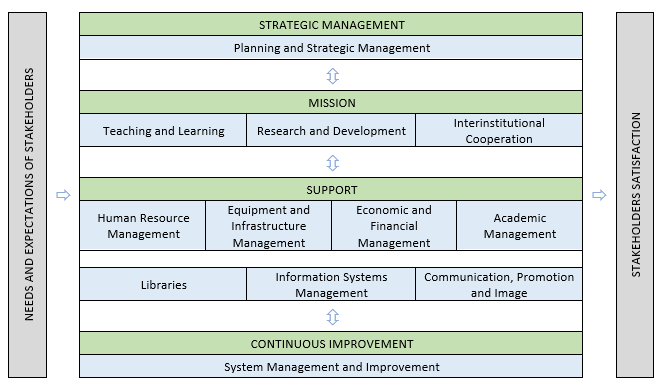Quality Policy
The main objective of the Quality Policy is continuous improvement by encouraging participation and responsibility.
Achieving this objective implies:
- The development of an organisational culture, involving and motivating the entire academic community in processes related to quality;
- The promotion of a quality culture across all activities and projects, in which evaluation is seen as a natural element of the institution’s activity.

Commitment
1
Promote a culture of institutional quality and self-responsibility based on regular self-evaluation and the consequent control of implementation of improvements.
2
Encourage active participation of internal and external stakeholders, relevant to the functioning of the institution, listening to their needs and expectations, seeking to increase their satisfaction.
3
Promote UAb values in all activities carried out within the scope of the SIGQ_UAb.
4
Ensure the identification of constraints and opportunities, consider and control them, increasing the effectiveness of the SIGQ_UAb and achieving better results.
5
Guarantee the necessary conditions for updating the SIGQ and its certification by the references and standards established as a reference for its construction.
6
Ensure, through the Information Security Policy, the organisation’s commitment to comply with the requirements of the ISO/IEC 27001 standard.
SIGQ_UAb
The SIGQ_UAb aims to ensure quality and continuous improvement in the areas of institutional mission, through the implementation and monitoring of the quality assurance system and participatory management of all relevant stankeholders.
The system is governed by the principles underlying the Quality Policy and convers all processes and activities carried out in order to achieve ins objectives of improving and guaranteeing the quality of its products and services.
SIGQ_UAb is based in a process approach, spread across for areas: Strategic Management, Mission, Support and Continuous Improvement, and its structural model is presented in the following model.
 Quality Manual
Quality Manual